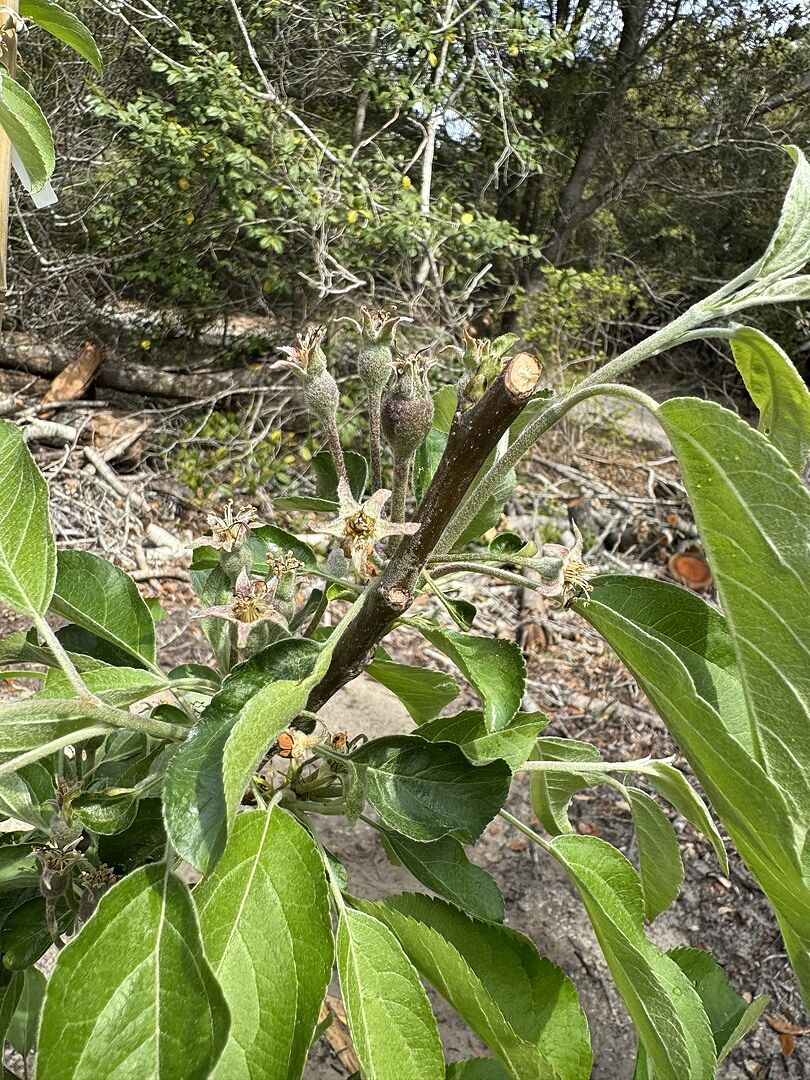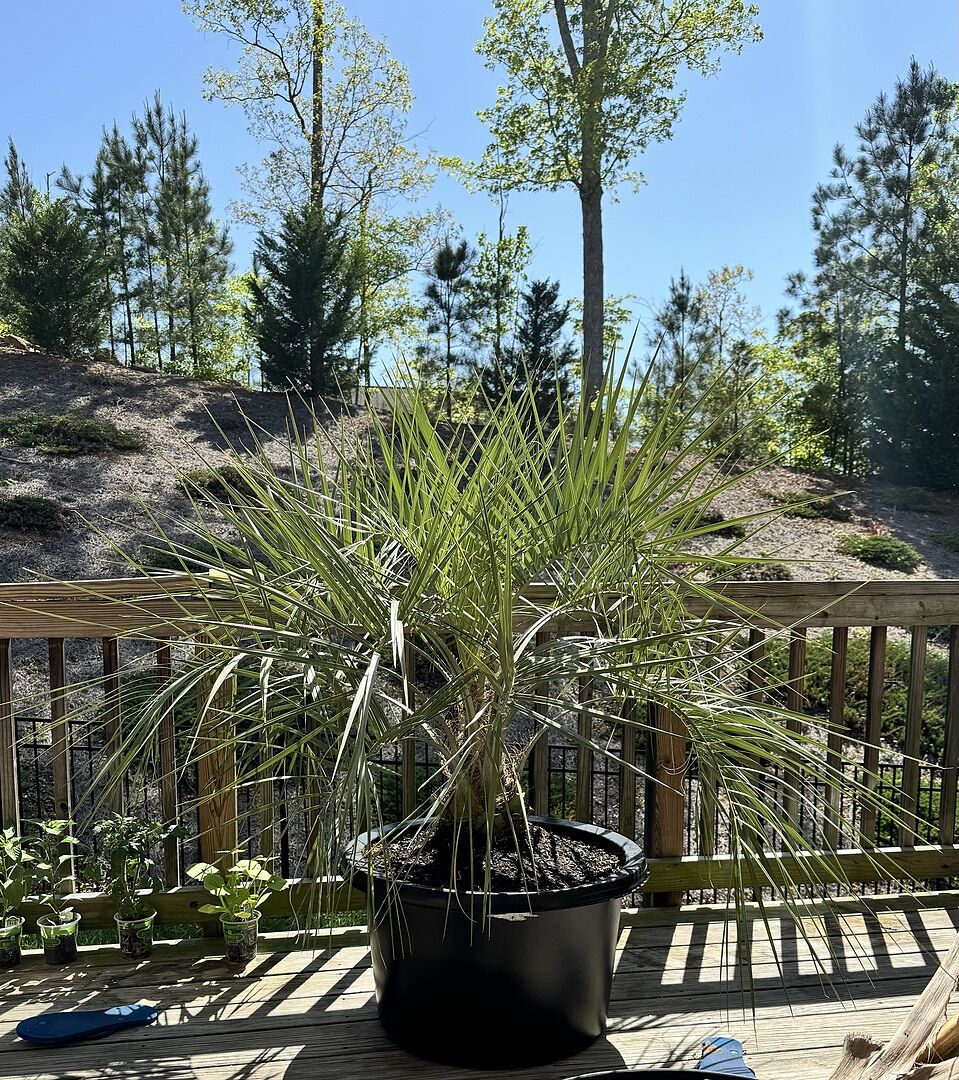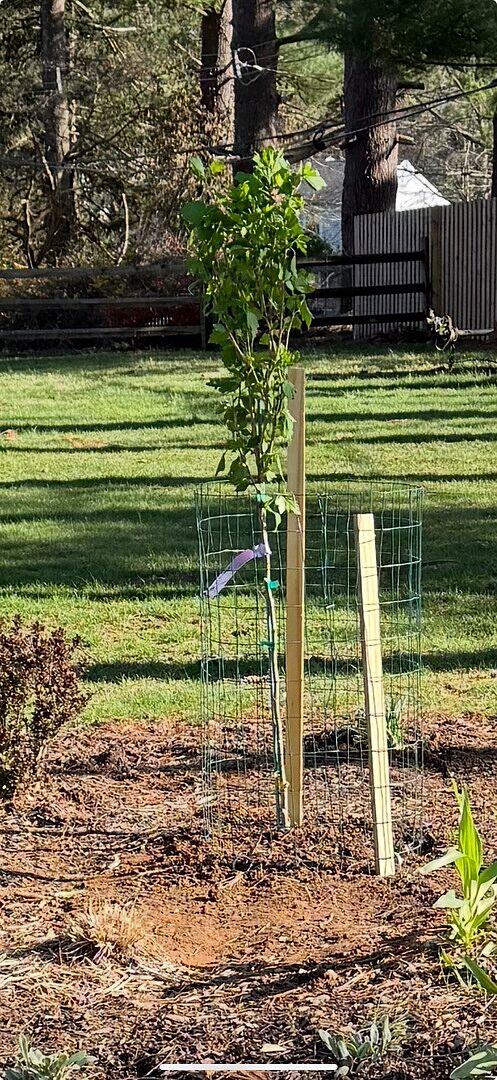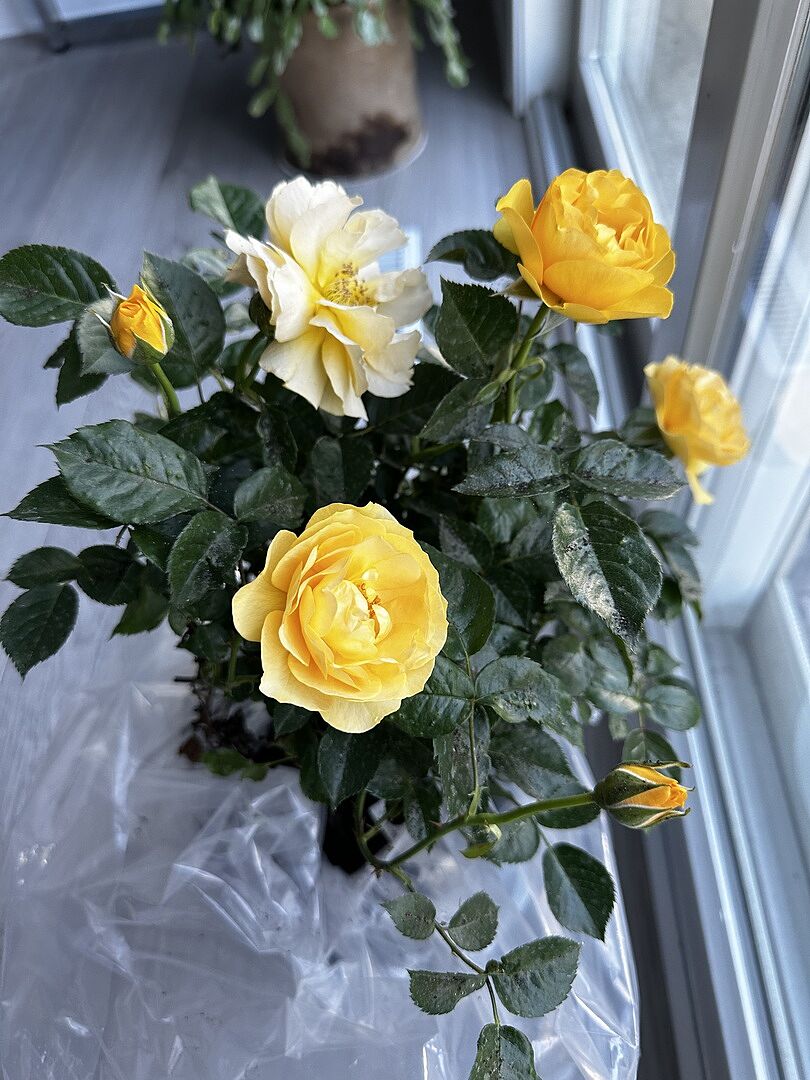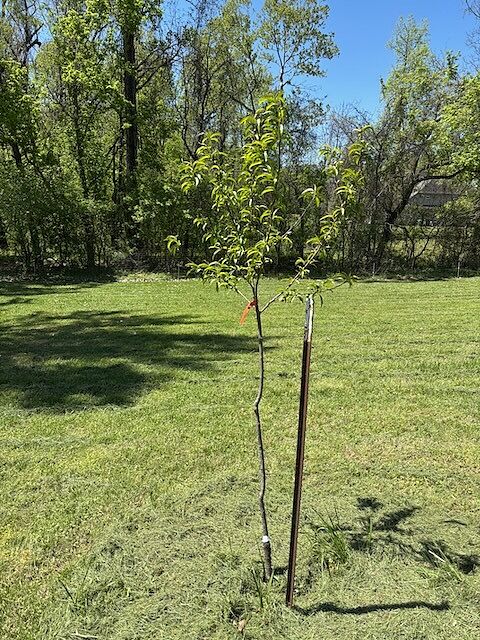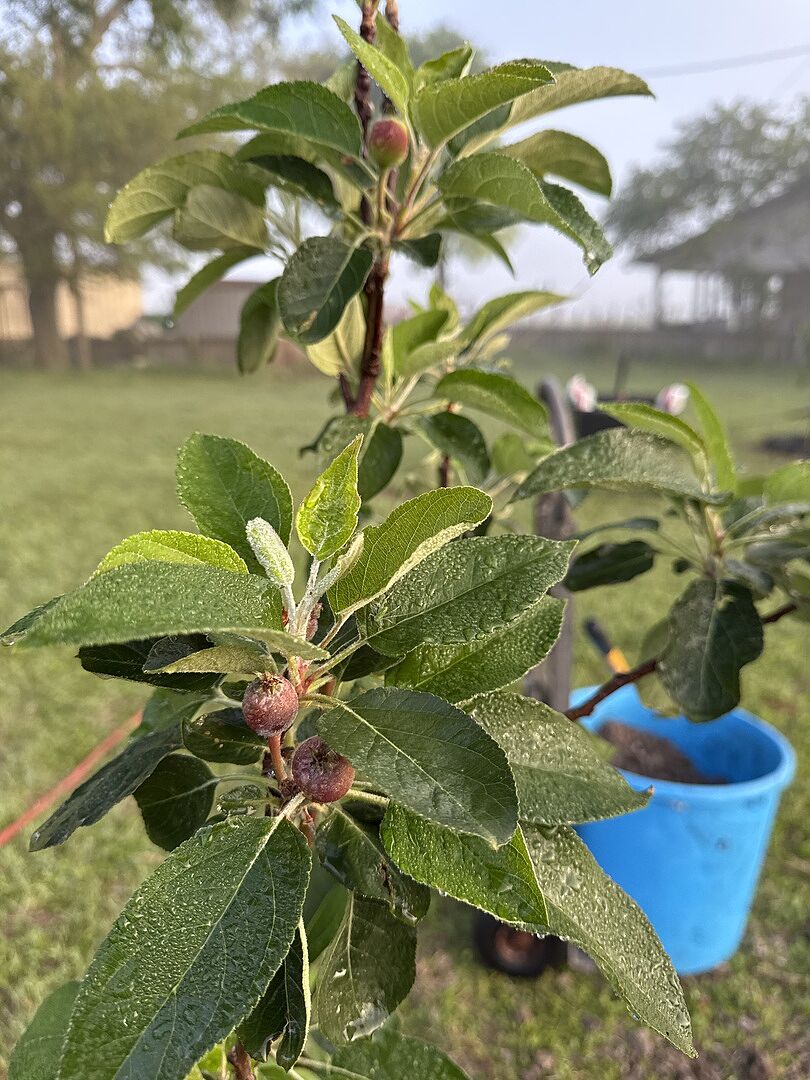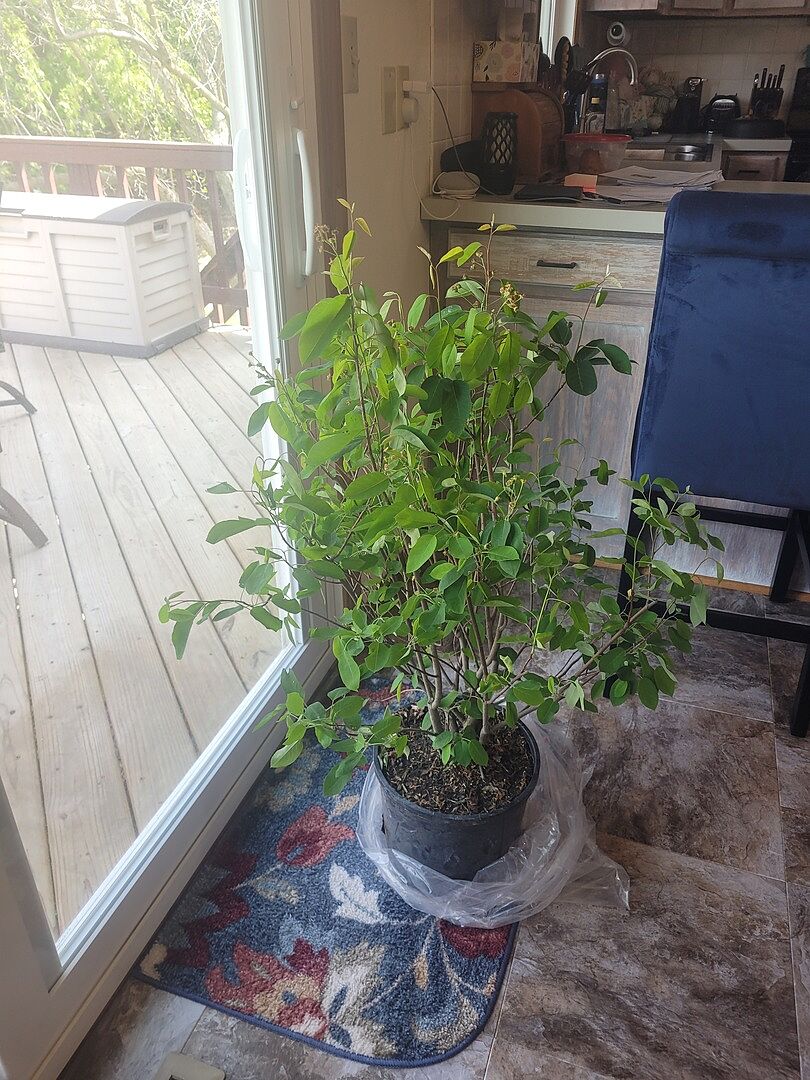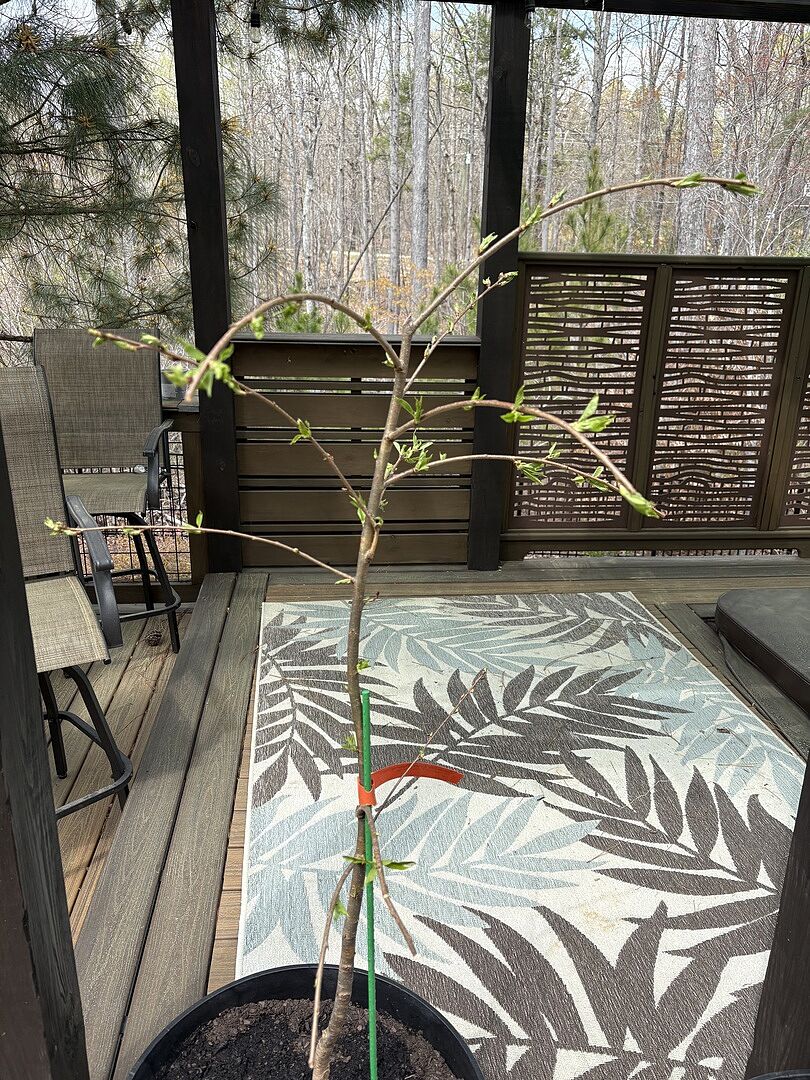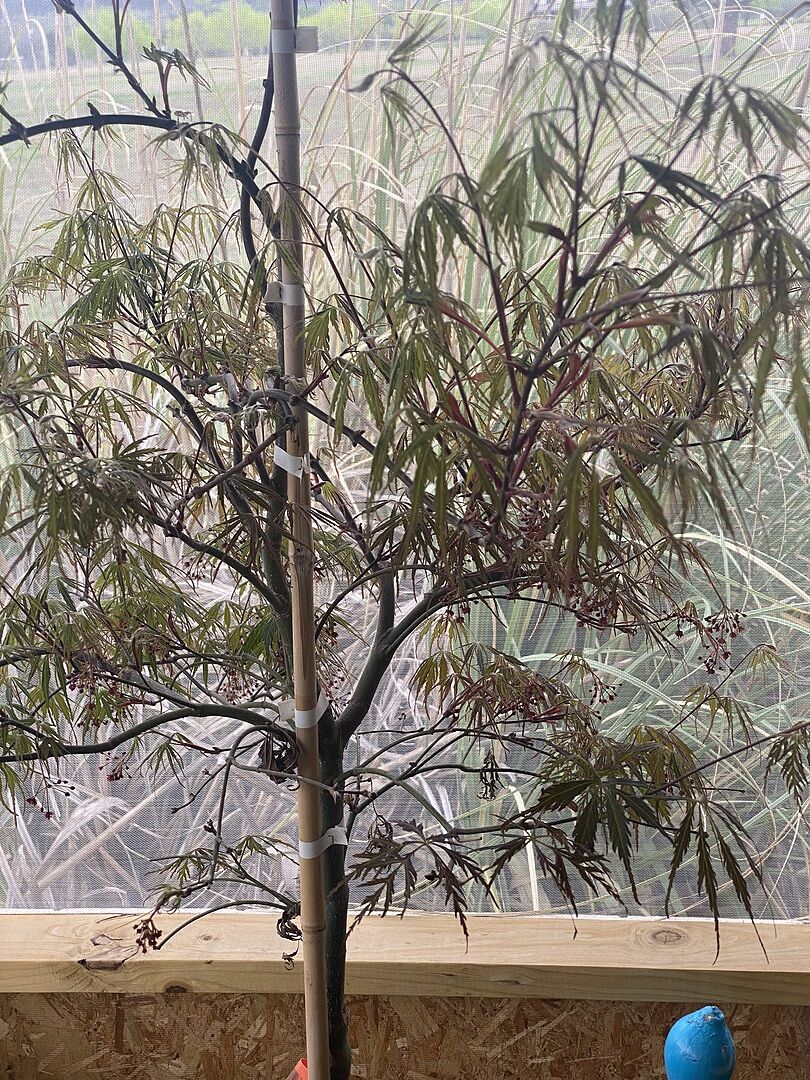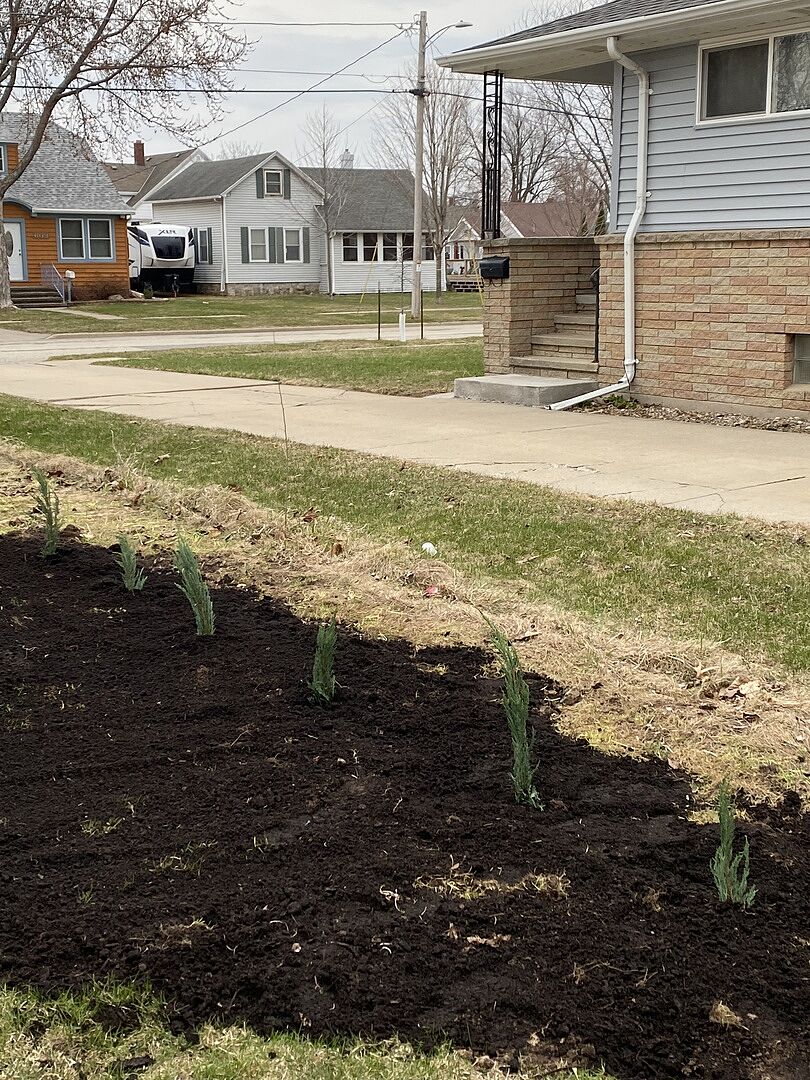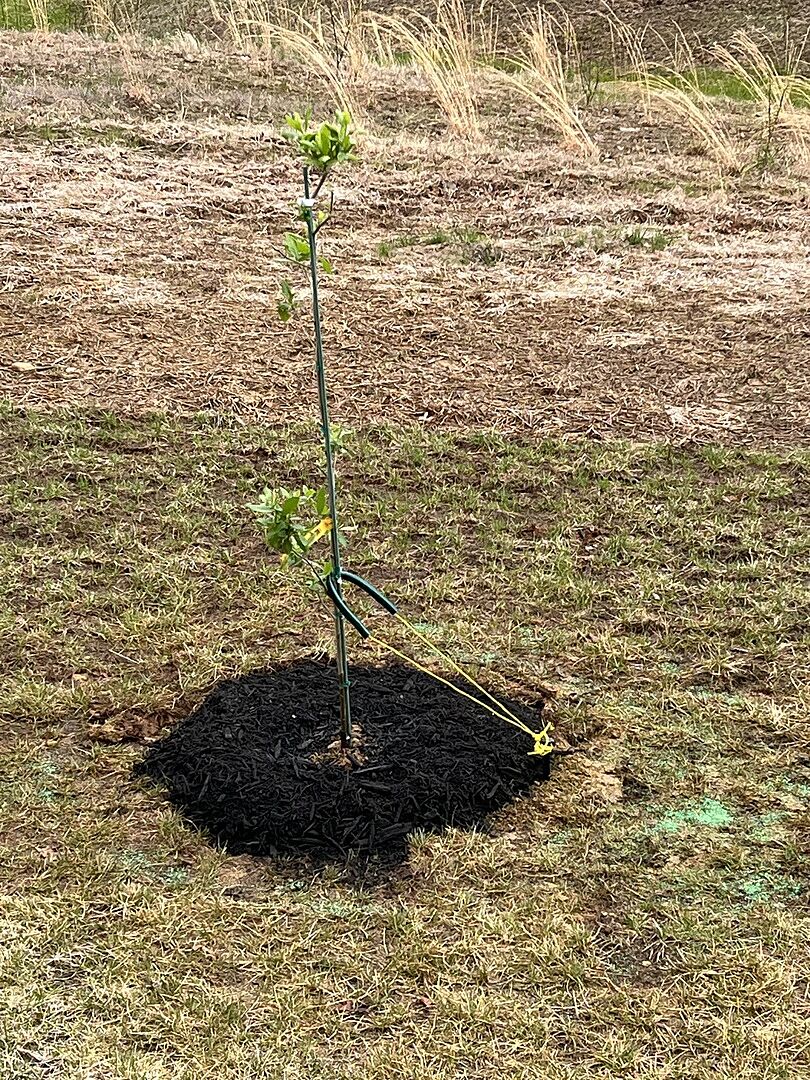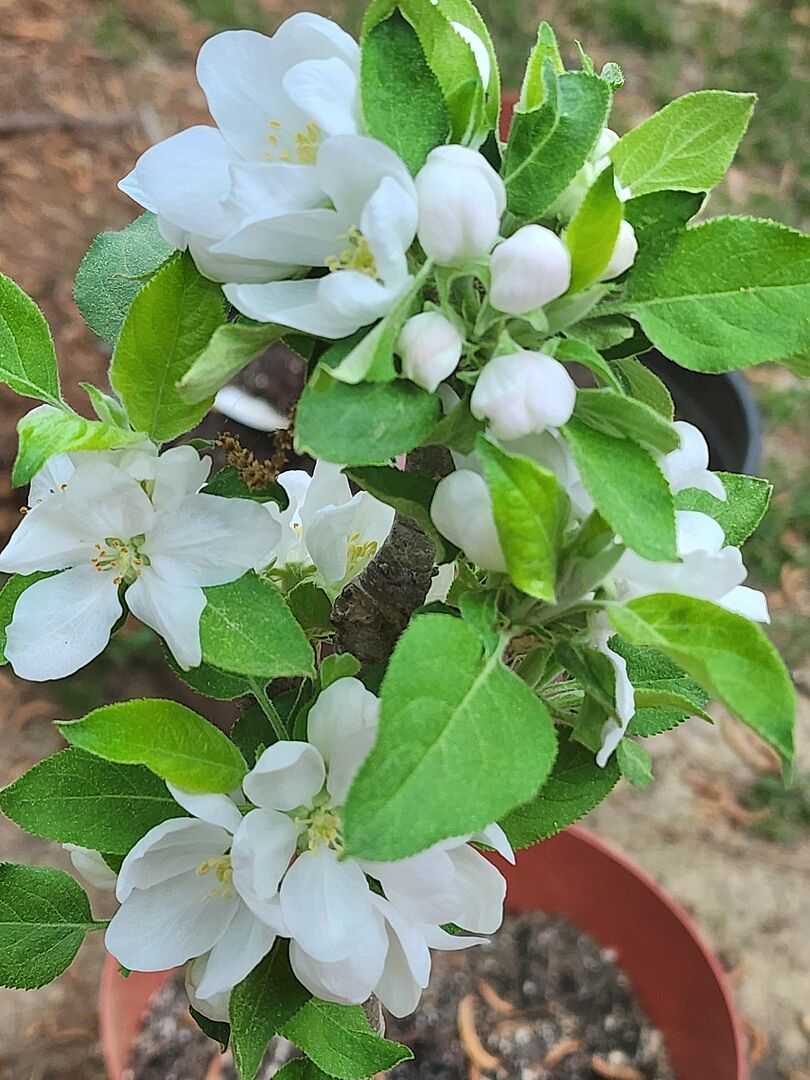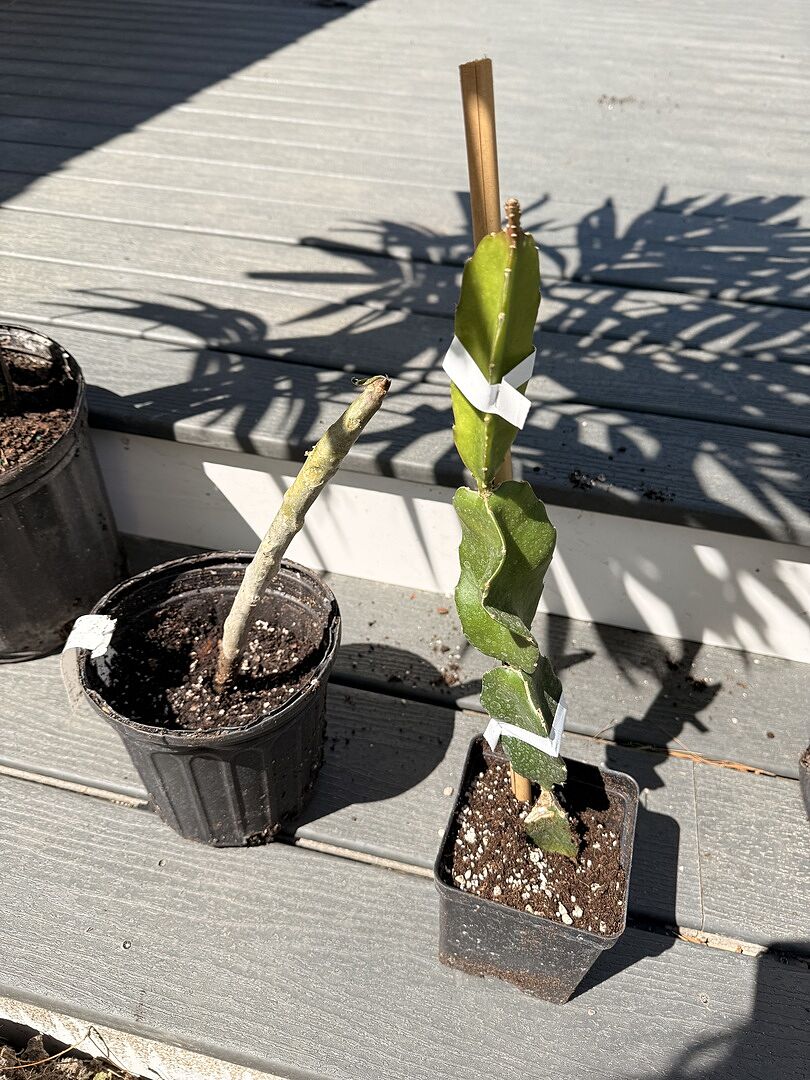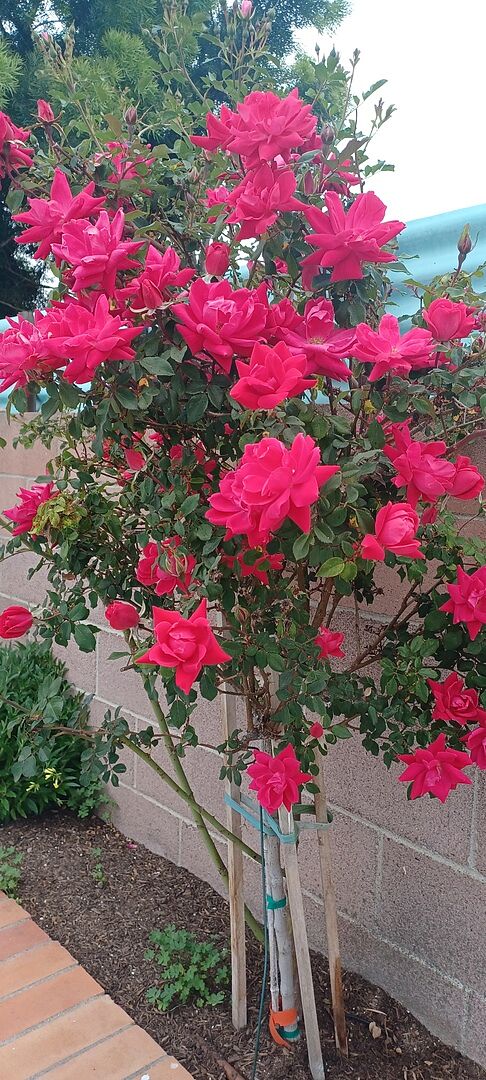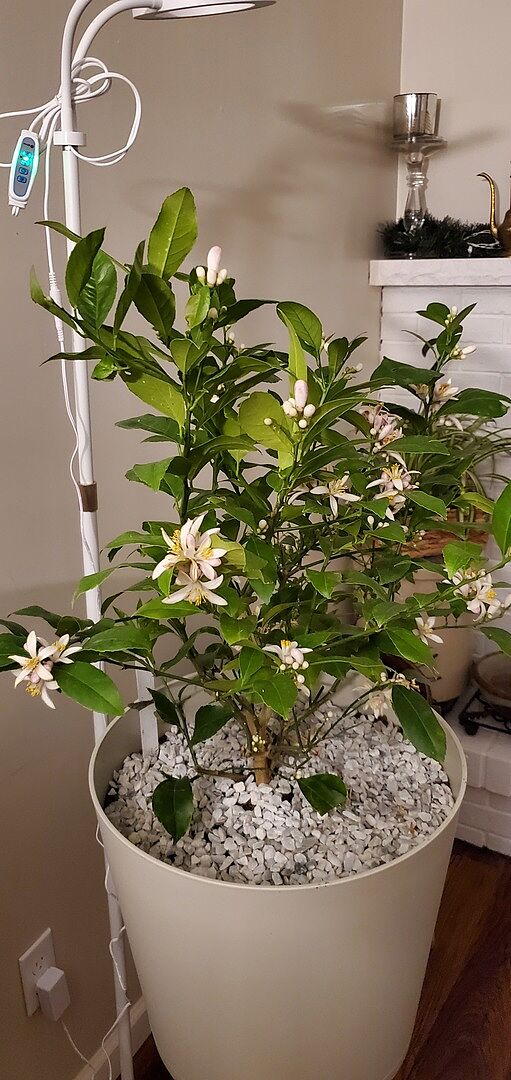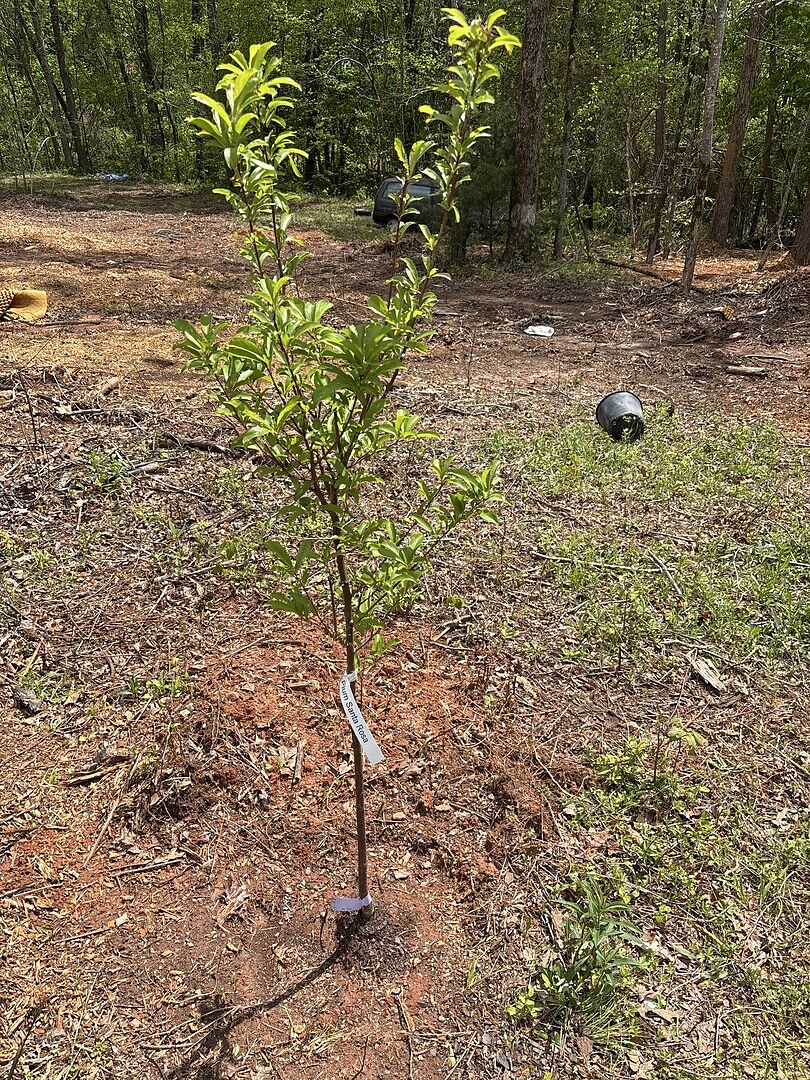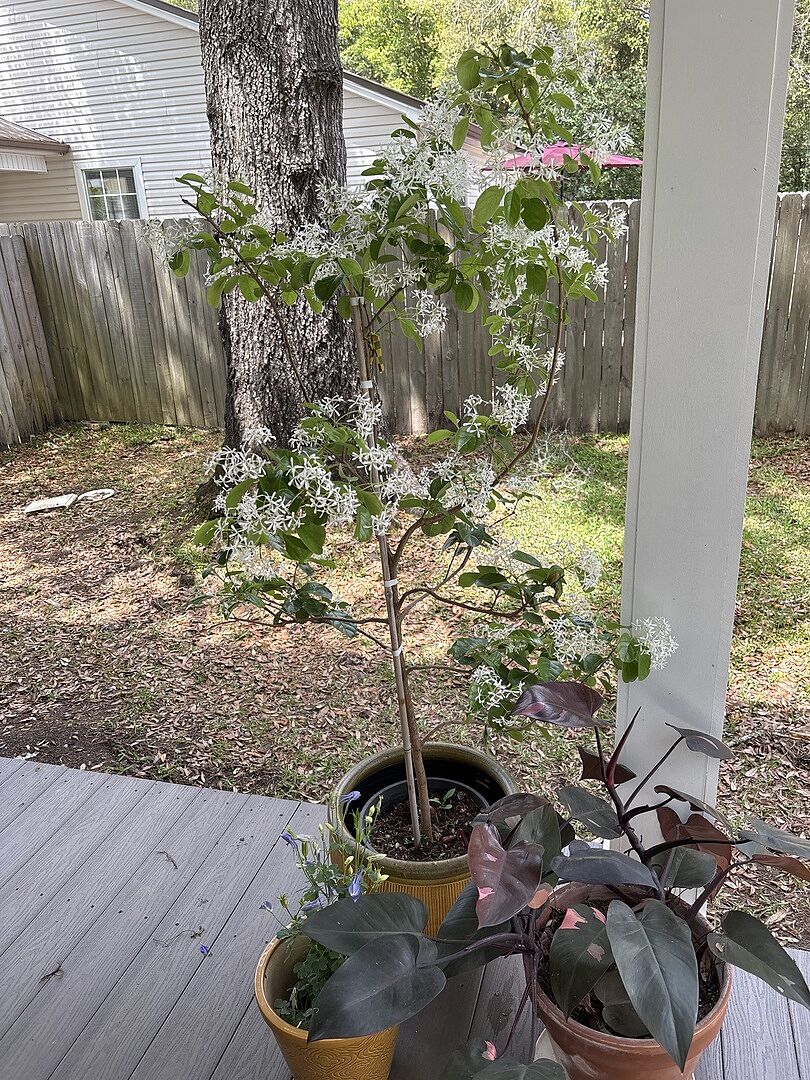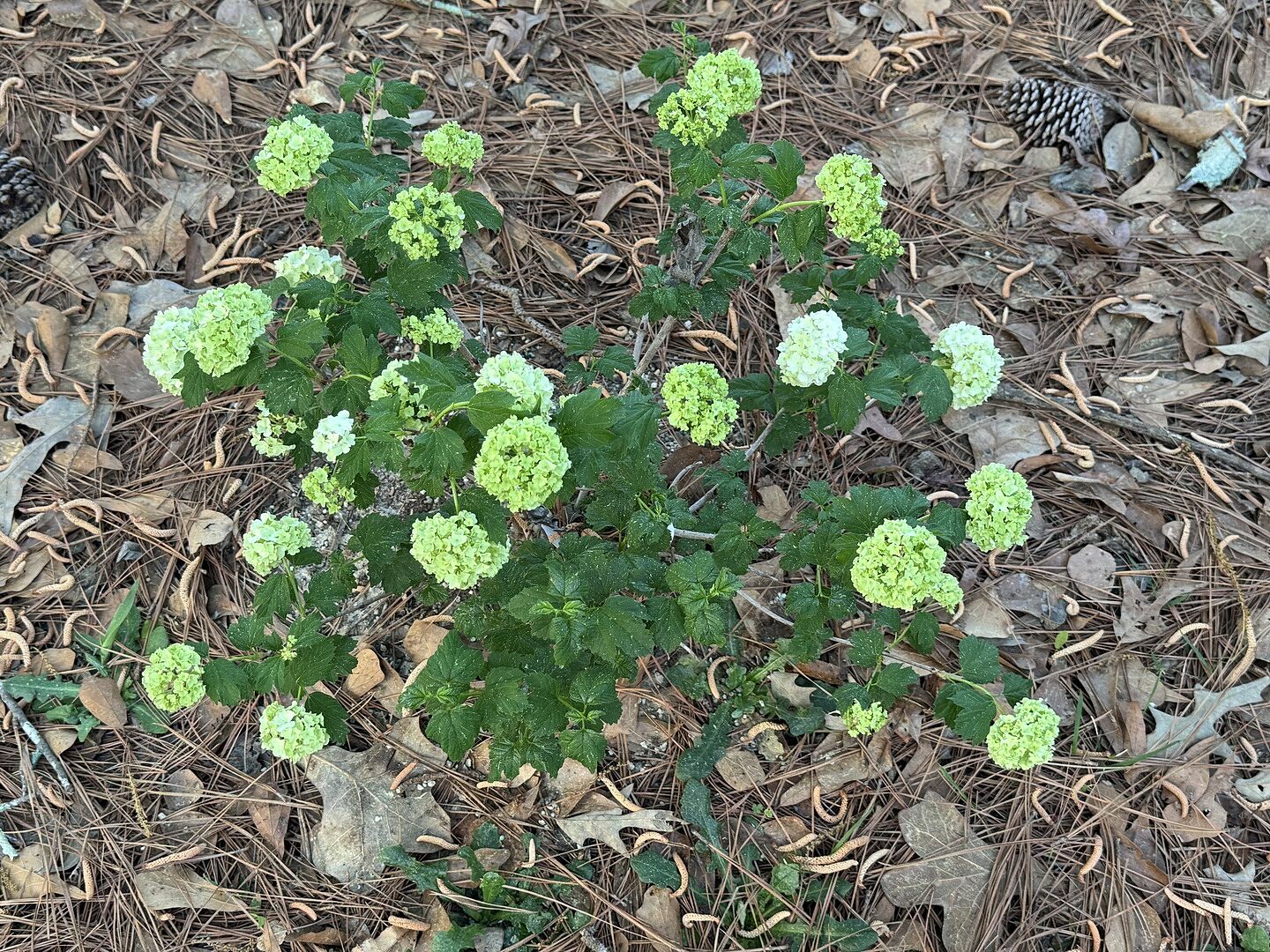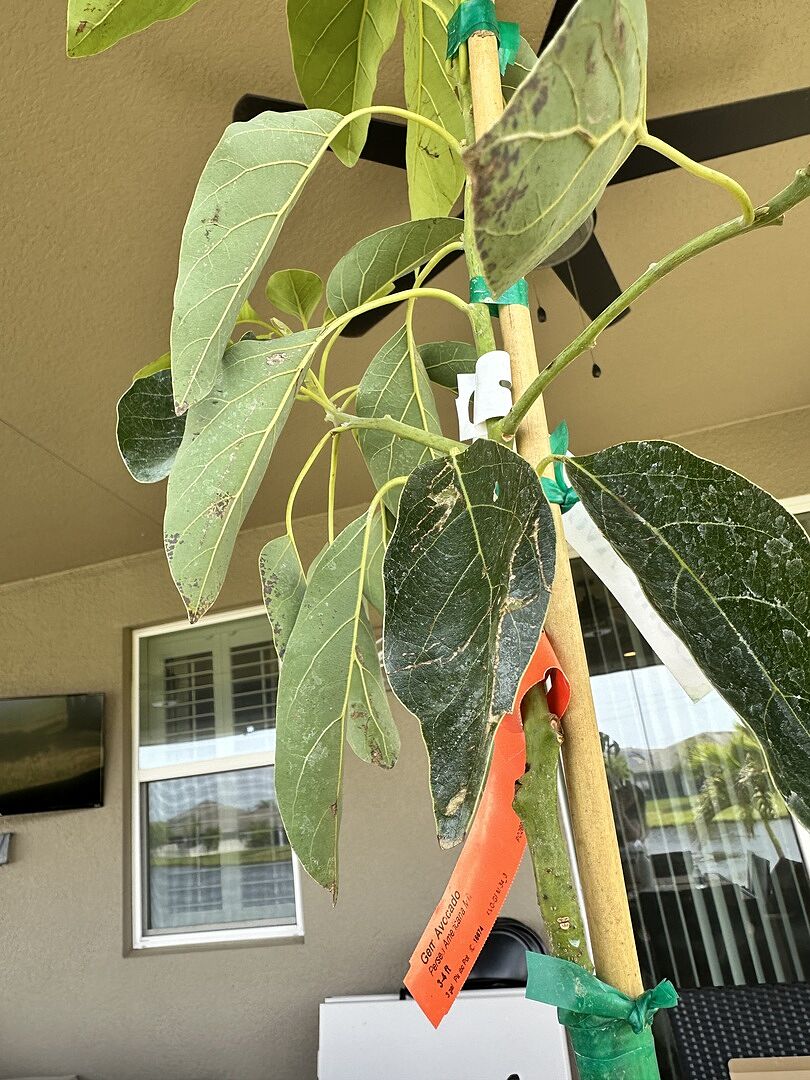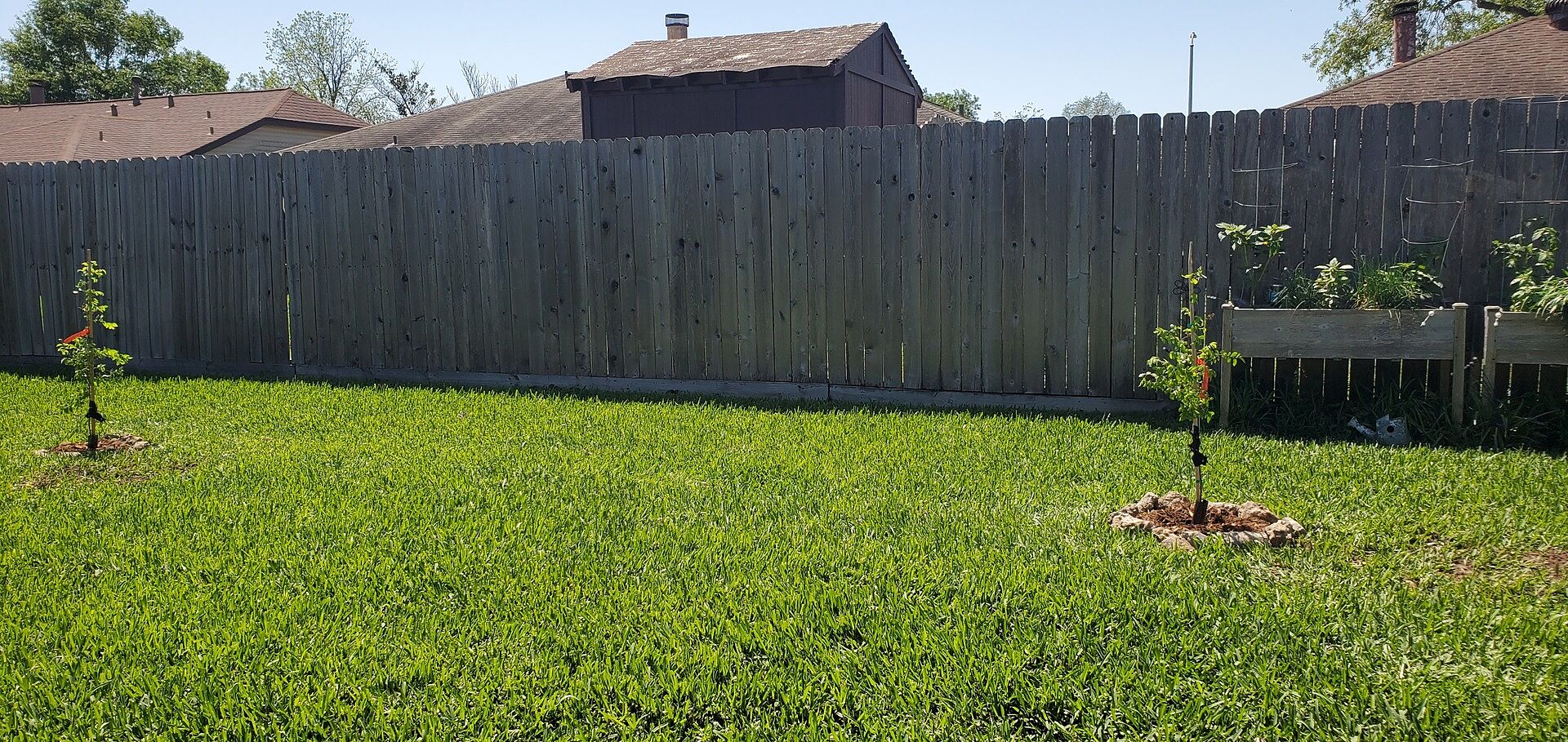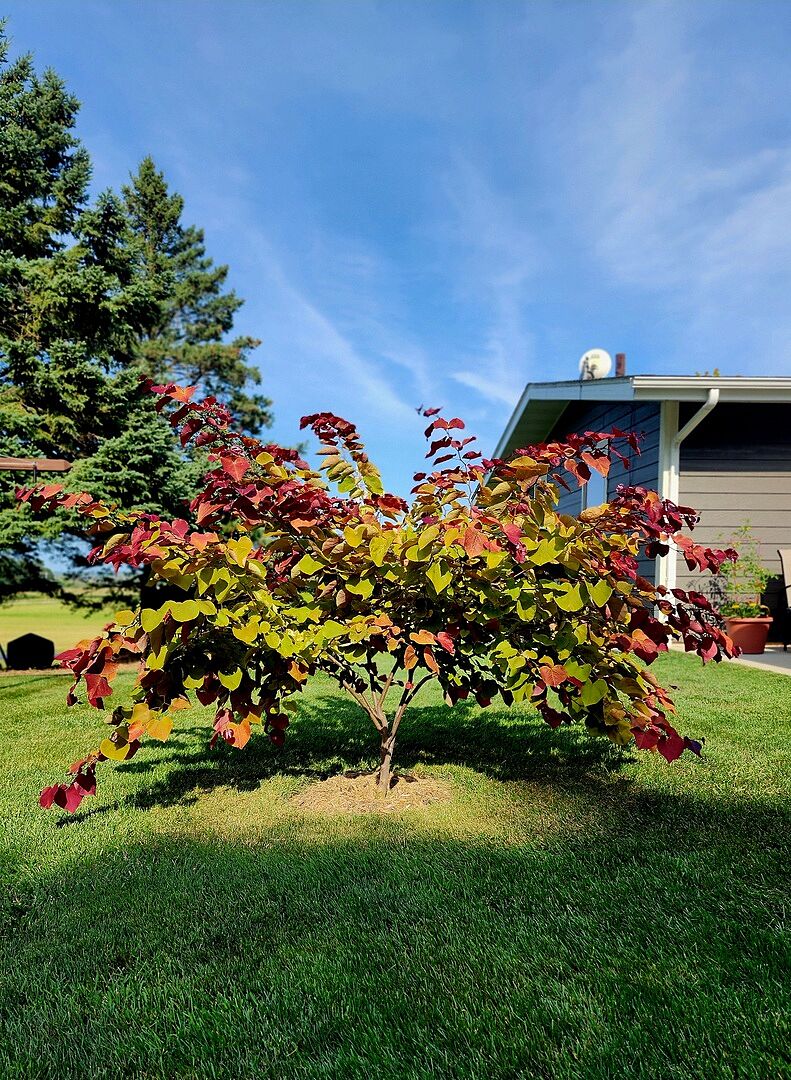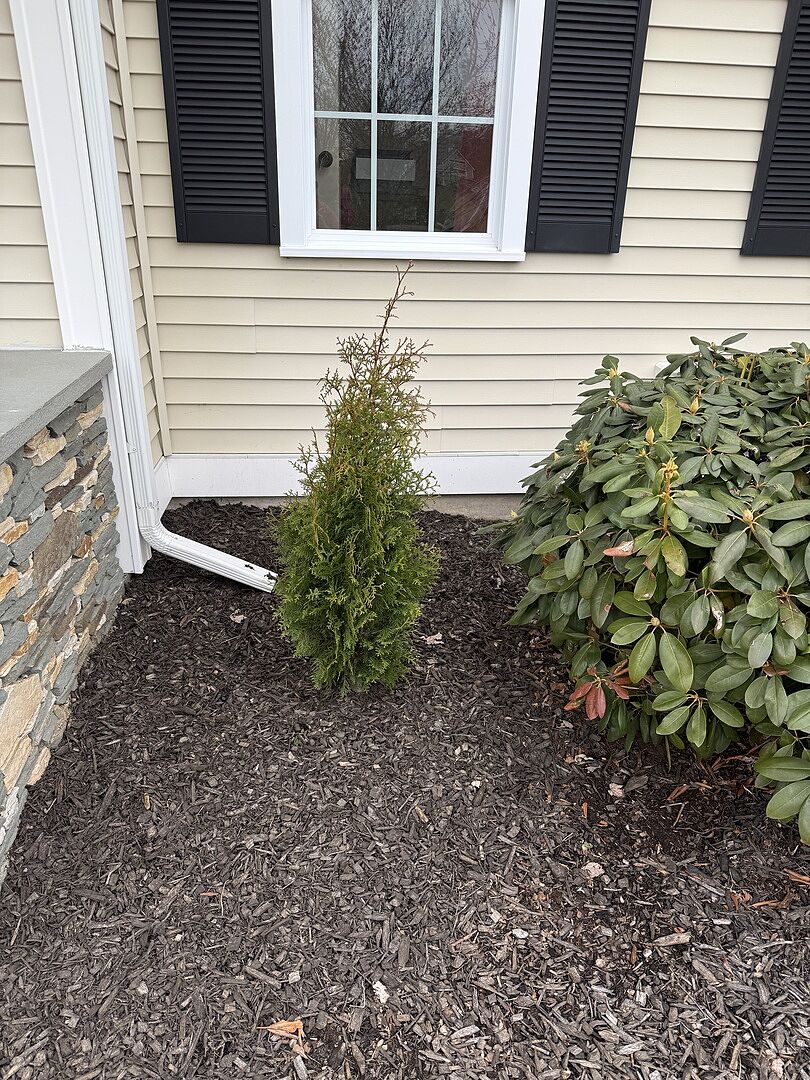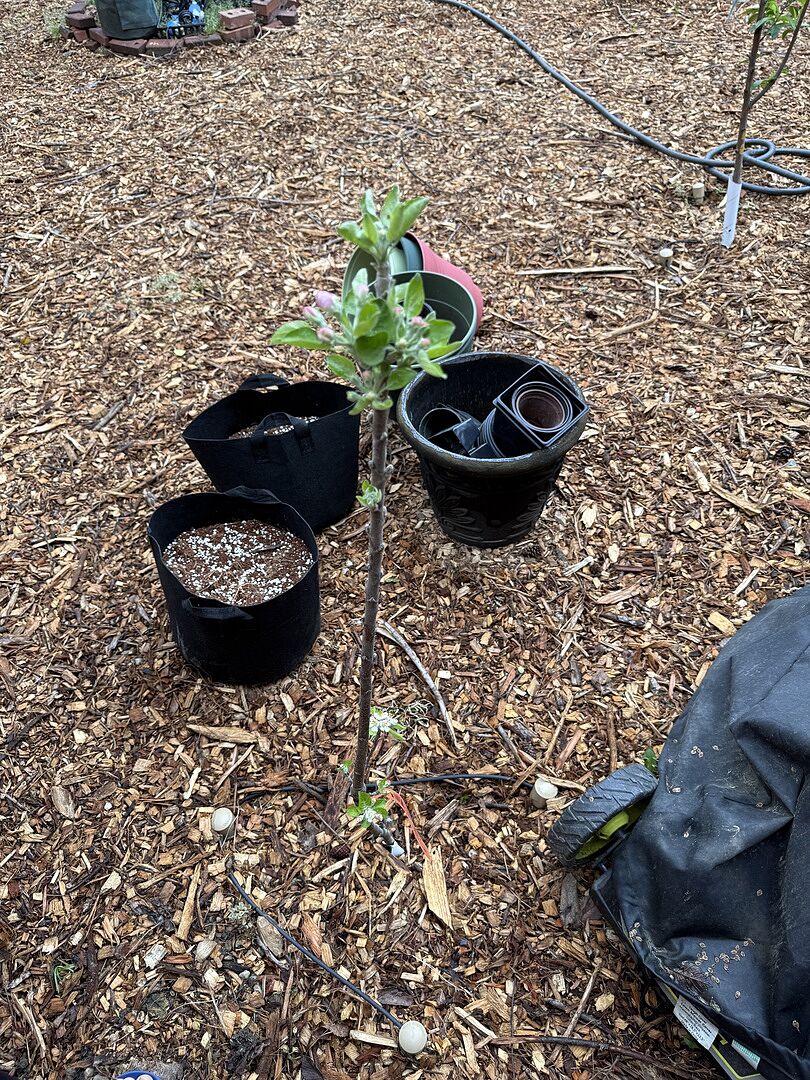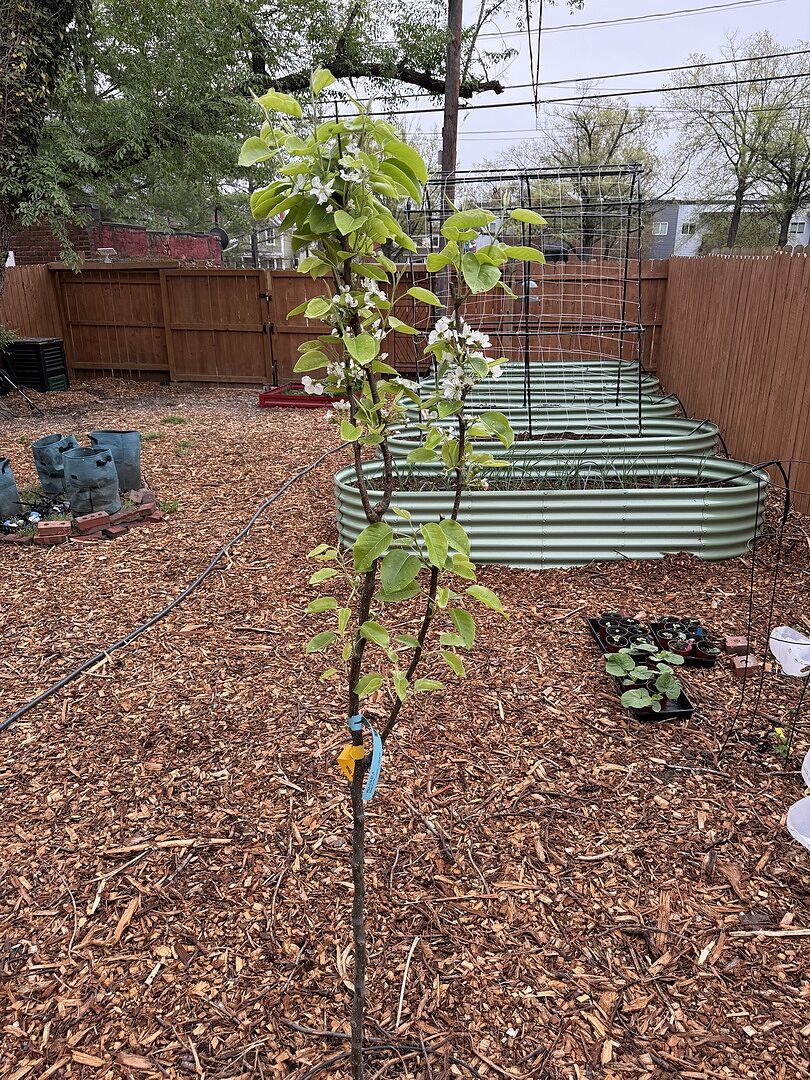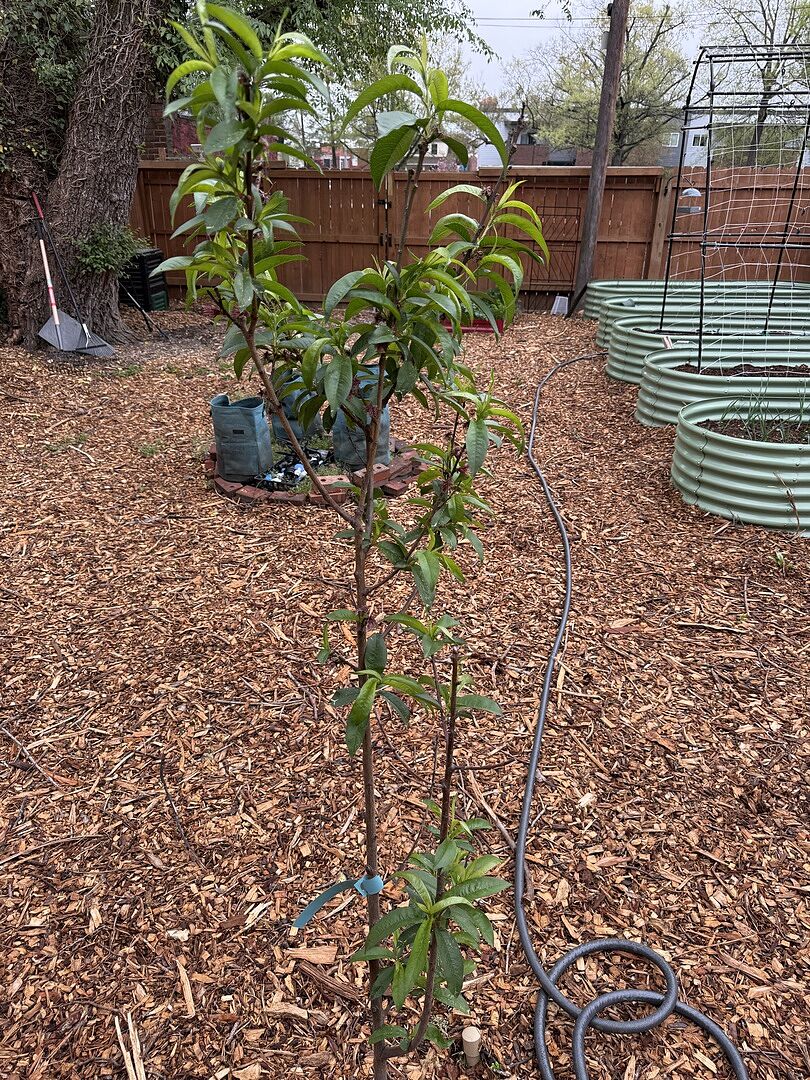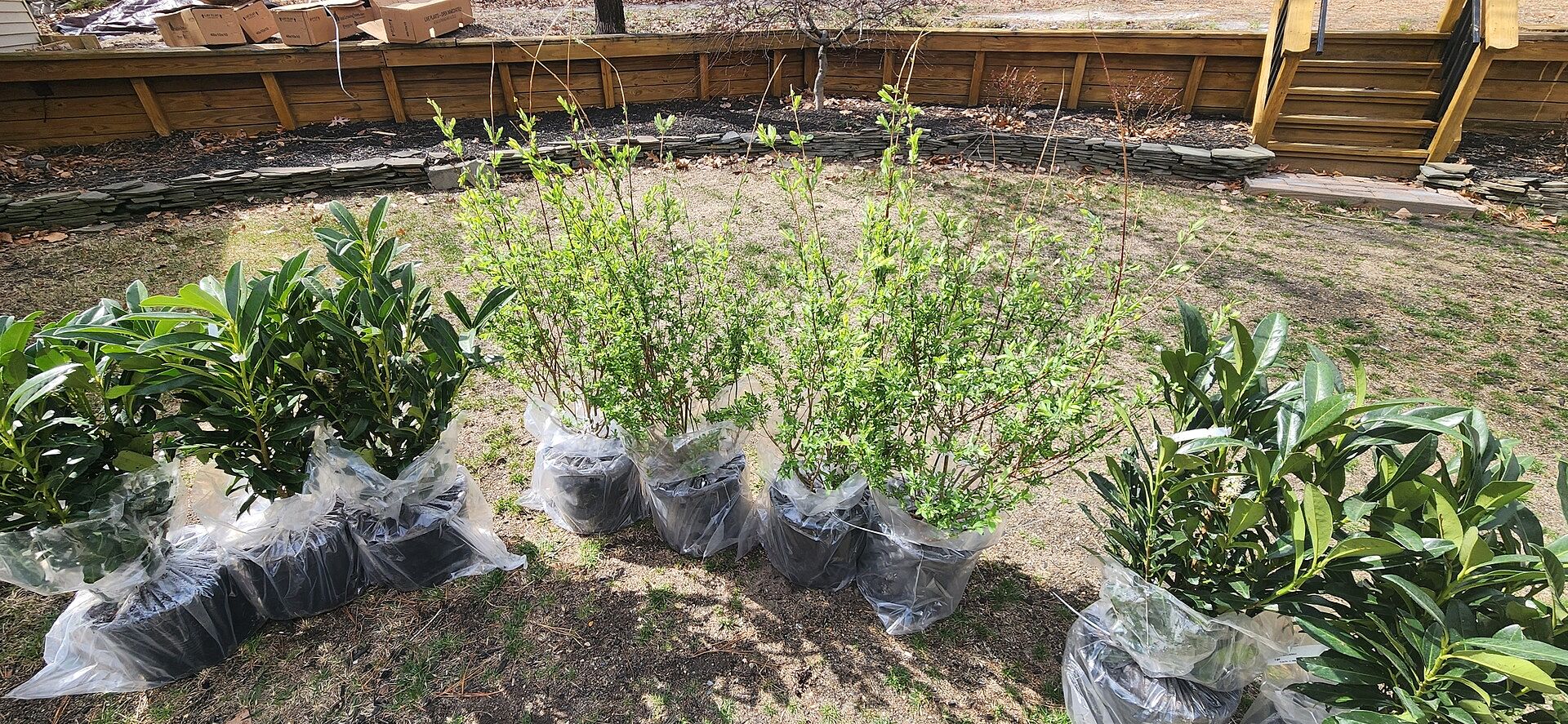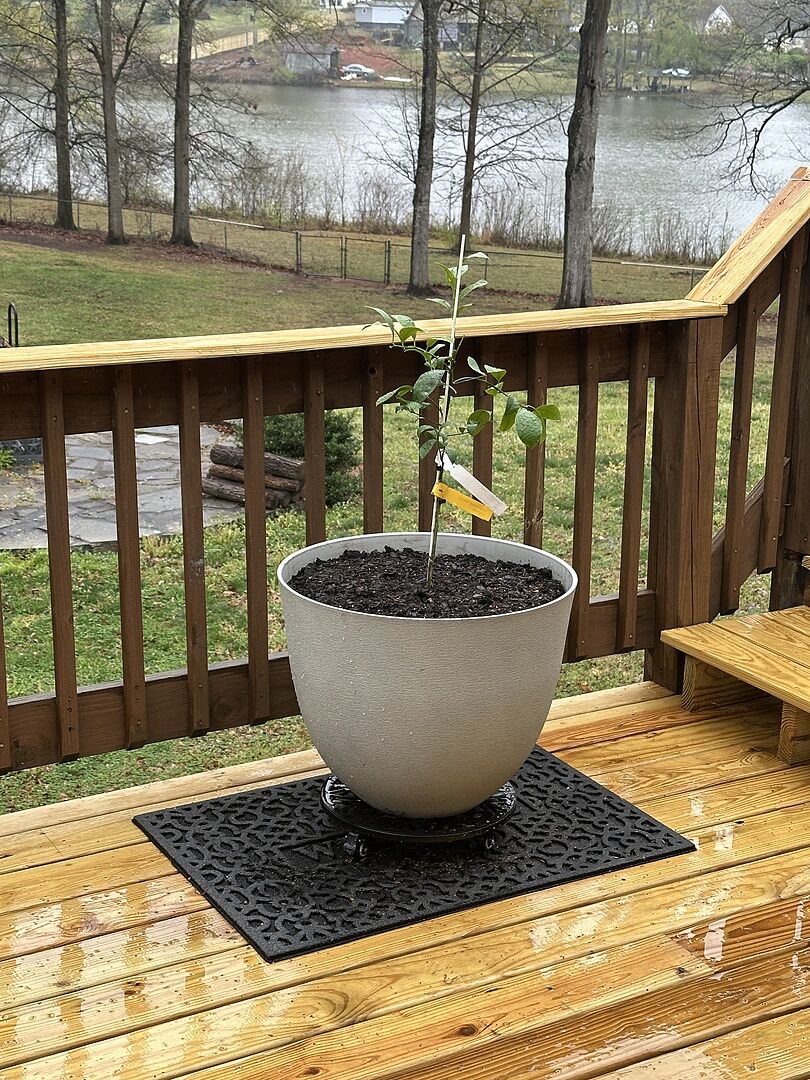Chrysanthemums: Growing & Care Guide

Last updated: Oct 17 2023

Known as Chrysanthemums or “mums” for short, these beauties are an underrated garden plant! They often play a supporting role in arrangements and holiday decorations, but we think they deserve a more starring role in your garden landscape! With over 20,000 varieties, Mums have an endless variety of shapes and colors with flowers that can be as small as a quarter or as big as a dinner plate. Their natural form is to develop as a multi-branched stem, and depending on the type can grow to about 3’ tall and 2’ wide.
Beyond the beauty of the Chrysanthemum is also a hardy flower that works hard to keep pests away. The flower heads contain pyrethrin, which is used in insecticides. This makes them great companion plants for other flowers and vegetables because they naturally help prevent pests.
Chrysanthemum Care
Chrysanthemums are easygoing and can take a fair amount of neglect; however, follow the care instructions below for the best and most plentiful blooms.
Location
Mums do well year-round in growing zones 5-9. Colder growing zones can grow mums as annuals (lasting only one year). Hotter zones (10 or higher) can enjoy mums in cooler times of the year as an annual but will need to keep them in a more shaded area. Too much heat and sun can negatively affect their blooming.
Mums do best in temperatures around 56-70F. A late heat spell or a frost will not affect your mums too much if it doesn’t go below 24F or above 100F. Any flowers, leaves, or stems harmed by a surprise weather event will soon be replaced with new growth and flower buds.
Light
Chrysanthemums need full sun for healthy plants and maximum blooms, with a minimum of five to six hours daily. This means that the sunlight should shine directly on your mums. Try the southern-facing side of your property, as the sun will be the most intense. Avoid deep shade or the northern side of your garden. Provide some partial shade if your daytime temps exceed 75F regularly in growing zones 9 or hotter.
Soil
Mums like nutrient-rich soil. Mix compost into your planting beds to help boost the nutrient value and aid in drainage. For clay-heavy areas, amend soils with potting soil to add nutrients and further alter the texture of your soil. For container-planted mums, a high-quality potting mix should be used. Avoid planting where the water will sit at the base of your plant, as mums will not tolerate sitting in water for prolonged periods.
For colder areas, we highly recommend mulching around your mum to help conserve soil temperature and water. Add a layer of mulch around 2-3” deep to the base of your plants. Make sure not to mound the mulch up at the base; instead push it back a few inches from the main stem to avoid poor air circulation and risk fungal issues. You can also use pine straw around your mums but increase the thickness to around four inches deep.
Pruning and Deadheading:
A few minutes spent pruning and deadheading your Mum will push new growth and more flowers all season.
- Deadhead or remove just the top few inches of spent flowers with a pair of garden scissors or shears. This allows the plant to redirect energy to making new flowers over setting seeds.
- For a fuller-looking mum, trim flower stocks back by around five inches right above where a leaf comes out. This will promote branching and a bushier mum.
- Keep the plant clean and promote airflow by removing any fallen leaves, stems, and flowers collected around your mum's base.
- Resist the temptation to trim your mum completely back in the fall. Instead, leave some dead growth, as this helps insulate the plants and provides needed benefits for the ecosystem.
- If you notice very leggy or stretched-out growth, you can opt to do a hard pruning where you cut the mum back to the base. A “hard” pruning should be done at the end of the season the first or second year, and you should leave 2-3 inches on the stems when cutting it back.
Watering
Chrysanthemums have a higher water demand than other plants. The warmer and drier your weather is, the more water your mum will need. Check the soil a few inches down to see if it is dry; if so, water your plant. Another easy way to tell if your mum needs watering is to look at the leaves and see if they are wilted; this method works best for mums that are planted in the ground.
The best time of day to water is the morning. When watering, do so at the base of the plant to avoid getting the leaves wet. Overwatered mums and wet leaves can lead to fungal issues and pests. Never let your mum sit in standing water, and always check before you water your plants to see if they need it first.
Container-planted mums will need more water compared to other plants. Check with your finger or a moisture meter in the soil to see if your mum needs water. When watering, do so deeply until the water freely runs out the drainage holes in the bottom.
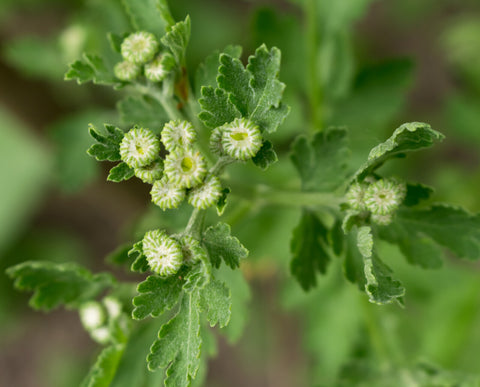
Fertilizing
Chrysanthemums require two different types of fertilizer during the growing season to perform at their best.
- When the plants are growing in the spring and early summer, fertilize them with a high-nitrogen fertilizer. Look for fertilizers that support leaf and stem growth on the label.
- When flower buds appear in summer, switch to a high-potassium fertilizer. Any general-purpose flowering fertilizer will do.
Organic fertilizers like compost are good all-around options because they add a slow release of nutrients. They also cut down on the frequency of application, saving you time and energy. A simple method could be light and frequent applications with a balanced fertilizer. Fertilize when the plants are ready for blooming and discontinue after flower buds are formed.
All fertilizers are made differently, so fully read the label before applying any product to your mums to prevent damage or overdosing. This will also let you know the amount and frequency of application so you can establish a schedule that works for you.
Suggested Container and Spacing
When planting in the ground, set mums 18” to 36” apart, depending on their mature size. Make sure that the plant sits at the same depth as it was in the pot and at soil level. Water can gather around the base and rot the stems if planted too low.
Mums make fantastic container plants due to their shallow root system. Choose a container that is at least 8 inches deep and the same width or two inches bigger than the current container it is in. The container material should promote water regulation and have drainage holes. In other words, a plastic container that will hold more moisture than a porous terracotta container is preferable as the mums like to stay in moist soil and have a tendency to dry out.
How to Overwinter Your Mums
Plants that are grown in containers don't have much protection against low temps, and in growing zones 4-7, most potted mums won't survive once the growing season ends. In that case, you can bring them indoors. And in Zones 4 and colder, you can dig up your mums and replant them in containers to bring inside, keeping them in a well-lit area with your other house plants. Adjust watering as needed since as your mum isn’t actively growing it might not need as much water during this time.
If you wish to let your mums go dormant, follow the steps below:
- Find a place where the temperature stays between 32 and 55°F, so your plant can go dormant. This is usually a basement or unheated garage.
- Before moving the plants, repot them into slightly larger containers. You want them to have enough room to start growing in the spring.
- Use a pot with excellent drainage; Mums don’t like wet feet so don’t hesitate to add more drainage holes if needed.
- Trim the plant back by about a fourth and remove any spent flowers if you haven't done so already.
- Water lightly.
- Put a few inches of straw or leaf mulch around the base of the plant and cover it all with breathable fabric like burlap or a cotton sheet.
- Check the pot about once a week through the winter. Water only if the soil feels dry about two inches down.
- With new growth in the spring, remove the cloth and mulch and remove any remaining dead foliage from the previous season.
- Transition the plants outside by placing them in a protected outdoor location like against a house for a week, then to their designated spot.
Troubleshooting
Mums like to stay out of drama and come with little issues. However, even the best of us can slip up from time to time. Below are some of the most common issues seen with mums and how to fix them:
- Pests: Chrysanthemums aren’t bothered by insects, as they produce pyrethrin, a natural insecticide. Insects on mums are primarily mites, aphids, and leaf miners. If aphids do happen to go after your plant, treat them as soon as possible, as they reproduce rapidly. Treating with Neem Oil is very effective.
- Support: Chrysanthemums need to be kept organized. They’ll need some support so they don’t become sprawling. Nursery mums are grown in a rounded shape through pruning. If you notice that your mums are leaning or leggy, feel free to add support or shape them to keep the rounded dome form.
- Blooming: Plants that receive light at night from security lights or street lights will be slow to bud! If your mum isn’t blooming, this can be a reason.
- Overwatering: Signs of overwatering include yellow leaves that turn black and fall off. If this occurs, remove the dead foliage and let your plant dry out. If it becomes a reoccurring issue, check the soil and mix in compost to help aid in drainage and give a place for water to go. For container-planted mums, add more drainage holes and cut back on the frequency of watering.
Suggested Uses
Mums are versatile plants able to grow in containers and in the ground. No matter where you grow them, your mums can decorate your indoors too, as cut flowers typically last around two weeks in a vase. We suggest planting in groups, as a border plant, or as accents to a garden bed that needs some fall color as other plants start to fade. Similar to other asters, mums bloom in the late summer into fall or until a frost below 24F arrives. For a full autumn spectacle, plant your mums with other late-blooming flowers like Russian sage, petunias, and lantana. If you have a vegetable garden, it’s not recommended to plant mums near your lettuce, but they are great companion plants with pumpkins, ornamental cabbage, kale, and ornamental pepper. Southerners can enjoy the colorful displays of blooming mums twice yearly because the equal days and nights of temperate weather that cause mums to bloom happen in both the spring and the fall. Northerners can expect a dazzling show in autumn.
Native Range
Native to Asia and northeast Europe, these hardy perennials come in countless varieties. By 2014, it was estimated that there were over 20,000 cultivars worldwide, with more being added yearly. Chrysanthemums are a member of the Aster family alongside their related cousins daisy and sunflower.
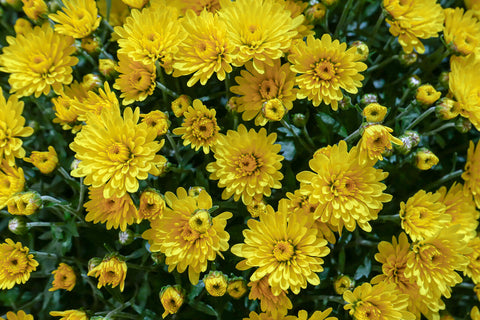
History
Chrysanthemums were first cultivated as herbs in China around the 15th century BC. Buddhist monks brought them to Japan and they were grown for their beauty and used in bonsai arrangements. Dutch explorers brought the first mums to reach Europe in the 18th century, and they reached America soon after. Today, the mum is used as a medicinal herb and incorporated into teas, wine, and cakes, and the leaves are steamed and used as greens. The chrysanthemum is one of the largest commercially produced flowers in the United States, with only roses outselling them.

Written by
Barbara Wilkat
Barbara's earlier careers as a graphic designer took her on travels throughout the Middle East and Southeast Asia, where she was able to see how people connected with plants and agriculture. After returning to school for an Associate Degree in Horticulture, she started her own landscape design and maintenance company.
Since then, she's worn different hats in the industry, from horticulturist to landscape designer. Her passion for interior plants exploded when she was able to work for Interior landscaping companies. And while she learns something new about plants everyday, she enjoys helping folks understand plant care.













